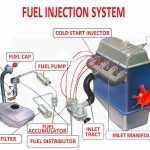Rudolf Diesel, a German engineer, conceived the idea for the engine that now bears his name after he had sought a device to increase the efficiency of the Otto engine (the first four-stroke-cycle engine, built by the 19th-century German engineer Nikolaus Otto). Diesel realized that the electric ignition process of the gasoline engine could be eliminated if, during the compression stroke of a piston-cylinder device, compression could heat air to a temperature higher than the auto-ignition temperature of a given fuel. Diesel proposed such a cycle in his patents of 1892 and 1893.
Originally, either powdered coal or liquid petroleum was proposed as fuel. Diesel saw powdered coal, a by-product of the Saar coal mines, as a readily available fuel. Compressed air was to be used to introduce coal dust into the engine cylinder; however, controlling the rate of coal injection was difficult, and, after the experimental engine was destroyed by an explosion, Diesel turned to liquid petroleum. He continued to introduce the fuel into the engine with compressed air.
The first commercial engine built on Diesel’s patents was installed in St. Louis, Mo., by Adolphus Busch, a brewer who had seen one on display at an exposition in Munich and had purchased a license from Diesel for the manufacture and sale of the engine in the United States and Canada. The engine operated successfully for years and was the forerunner of the Busch-Sulzer engine that powered many submarines of the U.S. Navy in World War I. Another diesel engine used for the same purpose was the Nelseco, built by the New London Ship and Engine Company in Groton, Conn.
The diesel engine became the primary power plant for submarines during World War I. It was not only economical in the use of fuel but also proved reliable under wartime conditions. Diesel fuel, less volatile than gasoline, was more safely stored and handled.
At the end of the war many men who had operated diesels were looking for peacetime jobs. Manufacturers began to adapt diesels for the peacetime economy. One modification was the development of the so-called semidiesel that operated on a two-stroke cycle at a lower compression pressure and made use of a hot bulb or tube to ignite the fuel charge. These changes resulted in an engine less expensive to build and maintain.


